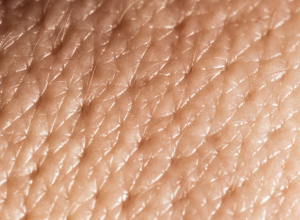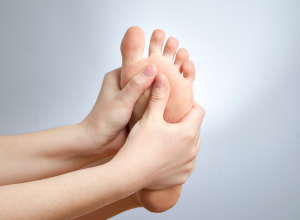
Epidermis
Epidermis is the thin, tough, outermost layer of skin on humans and animals. It is waterproof and when undamaged prevents bacteria, viruses and other substances from entering the body. The epidermis is much thicker in bodily places that need extra protection, such as the palms of the hands and the soles of the feet.
The epidermis lies directly on top of the dermis, which contains blood and lymph vessels, glands and hair follicles. The glands in the dermis produce sweat and sebum (an oily substance that prevents skin from becoming too dry), which reach the epidermis via tiny openings called pores.
Epidermis is comprised of several types of cells: keratinocytes, corneocytes, squamous cells, basal cells, and melanocytes, which produce the melanin that filters out ultraviolet radiation from sunlight and also gives skin its color. The skin is constantly renewing itself, with keratinocytes going on a 4 to 6 week journey called a keratinization process that ends with the cells dying and flaking off.
The word epidermis stems from the Greek word epi, which means over or upon.
Notice concerning medical entries:
Articles having medical content shall serve exclusively for the purpose of general information. Such articles are not suitable for any (self-) diagnosis and treatment of individual illnesses and medical indications. In particular, they cannot substitute for the examination, advice, or treatment by a licensed physician or pharmacist. No replies to any individual questions shall be effected through the articles.







